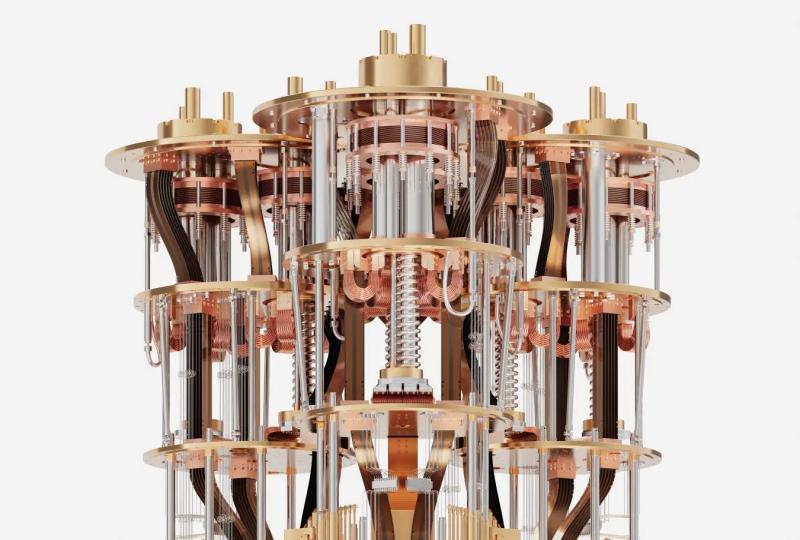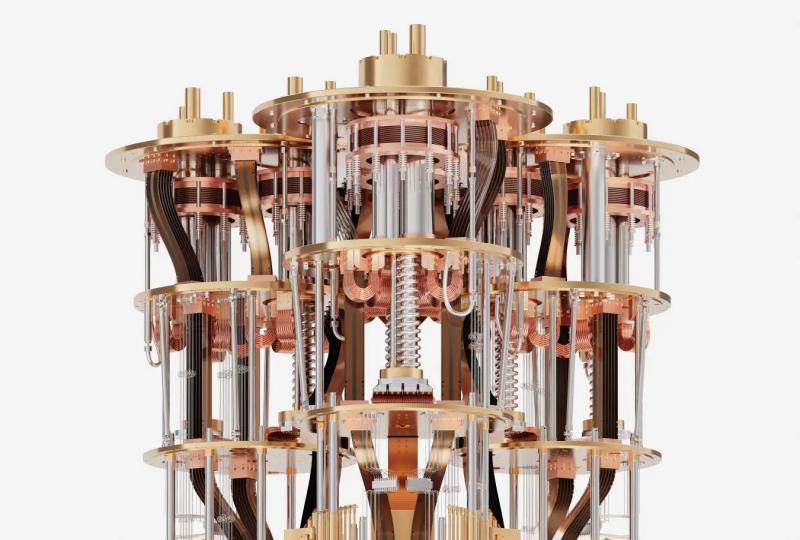Cryogenic Low-Pass Filter: Revolutionizing Quantum Signal Integrity
2025.08.09 · Blog Cryogenic systems form the backbone of modern quantum computingenabling qubit stability and coherence by operating at millikel
Cryogenic systems form the backbone of modern quantum computing, enabling qubit stability and coherence by operating at millikelvin temperatures. Amidst this frigid landscape, low-pass filters play an indispensable role in suppressing high-frequency noise that can decohere delicate quantum states. Enter the SpinQ Cryogenic Low-Pass Filter, a multi-stage marvel designed to deliver ultra-clean signals from DC to the microwave regime—all while enduring extreme cold. In this comprehensive guide, we’ll walk through four steps: understanding cryogenics, low-pass filter fundamentals, SpinQ’s cutting-edge design, and practical application advice. By the end, you’ll appreciate why SpinQ filters are the trusted choice for leading quantum research labs worldwide.
Understanding Cryogenic Environments
What Does “Cryogenic” Mean?
Cryogenics refers to temperatures below –150°C (123 K), but in quantum computing, we venture far lower—often below 20 millikelvin. At these temperatures:
-
Superconductivity Emerges: Materials exhibit zero electrical resistance, vital for superconducting qubits.
-
Thermal Noise Suppression: Johnson–Nyquist noise becomes negligible, preserving fragile quantum superpositions.
-
Material Properties Shift: Dielectric constants, inductance, and resistance can all change significantly.
Why Extreme Cooling Matters
Maintaining a qubit’s coherence time hinges on suppressing environmental disturbances. Even tiny thermal phonons or EMI at gigahertz frequencies introduces decoherence. Cryogenic filtering ensures:
-
Peaceful low-frequency control signals without high-frequency leakage.
-
Cleaner readout traces, improving signal-to-noise ratios by up to 20 dB in practice.
-
Compatibility with sensitive amplifiers such as Josephson Parametric Amplifiers (JPAs).
Together, these factors make cryogenic filters as critical to system performance as the qubits themselves.
Fundamentals of Low-Pass Filters
What Is a Low-Pass Filter?
A low-pass filter (LPF) allows signals below a certain cutoff frequency to pass while attenuating higher frequencies. In quantum setups, LPFs protect qubits and amplifiers from:
-
Broadband thermal radiation traveling down cables.
-
Clock harmonics from room-temperature electronics.
-
EMI from external sources, down to the mixing chamber stage.
Key Performance Metrics
For any LPF, several parameters define its efficacy:
Cutoff Frequency
The –3 dB point where signal power drops by half. SpinQ offers flexible cutoffs from 20 Hz to 110 kHz per stage, plus multi-gigahertz LC sections.
Insertion Loss
The attenuation in the passband. SpinQ achieves <0.5 dB up to cutoff, ensuring control pulses remain crisp.
Attenuation Slope
How rapidly unwanted frequencies are suppressed, typically in dB/octave. SpinQ’s four-stage LC stacks yield >50 dB suppression above 1 MHz.
Impedance Matching
A 50 Ω environment throughout avoids reflections that can bounce back into the sample, degrading coherence.
Challenges in Cryogenic Filter Design
Thermal Contraction of Materials
At 4 K and below, metals and dielectrics contract differently. Poor compounding can crack solder joints or warp PCBs. SpinQ uses:
-
Gold-plated copper chassis to minimize differential contraction.
-
Flexible solder alloys rated for millikelvin cycling.
Component Parasitics at Millikelvin Temperatures
Inductors and capacitors often change value at low temperature due to frozen carriers or altered dielectric constants. SpinQ’s inductors and ceramic capacitors are:
-
Selected for stable cryogenic performance.
-
Characterized repeatedly over cooldown cycles.
Maintaining High Q-Factor
Filters depend on high quality factors to achieve steep attenuation. Yet at low temperature, substrate losses can help or hurt:
-
Benefit: Carrier freeze-out in semiconductors reduces dielectric loss in capacitors, boosting Q.
-
Risk: Parasitic coupling in multi-stage networks can introduce unwanted resonances.
SpinQ combats these by carefully modeling inter-stage coupling and verifying performance in dilution refrigerators.
SpinQ’s Cryogenic Low-Pass Filter Technology
Designing for 20 Hz to 20 GHz
A truly cryogenic LPF must span decades of frequency:
-
Low-Frequency RC Sections: For DC offsets and slow bias lines, SpinQ offers 2-pole RC stages with precise 100 Ω–1 kΩ resistances.
-
Mid-Frequency LC Networks: Four cascaded 7-pole LC stacks create >50 dB suppression from 1 MHz to tens of GHz.
-
Infrared/Optical Filters: For sub-millimeter backgrounds, optional infrared blocks integrate seamlessly.
Multi-Stage LC and RC Architecture
SpinQ’s architecture balances insertion loss against attenuation:
-
Primary RC Stage at room temperature to protect the first cooling stage.
-
Secondary RC/LC Stage at 4 K for enhanced suppression.
-
Quaternary LC Stages at 10 mK, employing superconducting traces for minimal loss.
This hierarchical design reduces heat load on each fridge plate, maintaining thermal budgets.
Thermalization Strategies
Good thermal contact ensures filters don’t act as thermal bottlenecks:
-
Gold-Plated Copper Blocks: Wrapped around PCB edges to anchor copper planes.
-
RF Gaskets: Provide electromagnetic shielding and heat sinking.
-
Distributed Anchors: Every stage clamps to its respective fridge plate.
SpinQ Filter Specifications and Performance
Electrical Characteristics
Here’s a summary of baseline performance for the SpinQ standard model:
| Parameter | Value |
| Cutoff Frequencies | 20 Hz, 20 kHz, 50 kHz |
| Insertion Loss (≤Cutoff) | <0.5 dB |
| Attenuation (1 MHz–1 GHz) | >60 dB |
| Attenuation (1–20 GHz) | >50 dB |
| Impedance Matching | 50 Ω nominal |
| Max Operating Voltage | 25 V / 250 mA (per channel) |
Mechanical and Thermal Properties
-
Chassis: Gold-plated copper, 100 g mass.
-
Connectors: 25-pin D-sub female/male pairs.
-
Thermal Anchors: Four M3 screws per stage for robust heat sinking.
-
Operating Temperatures: 300 K down to 10 mK.
Comparison Table
| Feature | SpinQ LPF | Competitor A | Competitor B |
| Channels | 25 | 20 | 16 |
| Cutoff Flexibility | Up to 3 presets | Single fixed | 2 presets |
| Attenuation Slope | 60 dB per decade | 40 dB per decade | 45 dB per decade |
| Cryogenic Stability | Verified to 10 mK | Verified to 100 mK | Verified to 4 K |
| Thermal Anchoring Stages | 3 stages | 2 stages | 2 stages |
| Customization | Full custom available | Limited | Limited |
Integration and Installation
Mounting in Dilution Refrigerators
Proper installation ensures peak performance:
-
Stage Assignment: Install RC stages at 4 K, LC stacks at 10 mK.
-
Torque Specs: Tighten screws to 0.5 N·m to avoid PCB warping.
-
Thermal Grease: Apply a thin layer at anchor points to improve conduction.
Cable Assemblies and Connectors
SpinQ offers:
-
Cryogenic Coax Cables: Silver-plated copper for minimal thermal conductance.
-
Semi-Rigid Options: For fixed routing inside cryostat.
-
Interconnect Hubs: Simplify bulk connections on the 4 K and mK plates.
On-Chip vs. External Filtering
While on-chip filters add integration, external SpinQ modules provide:
-
Replaceability: Swap filters without re-fabricating chips.
-
Scalability: A single filter block serves multiple qubit channels.
-
Thermal Management: Dedicated heat sinks handle dissipation.
Applications in Quantum Computing
Superconducting Qubit Readout
-
Filters shield JPAs from broadband noise, boosting readout fidelity by up to 30%.
-
Suppresses room-temperature amplifier harmonics from entering the mixing chamber.
Spin Qubit Control Lines
-
Maintains ultra-low noise on DC gates and high-frequency control pulses.
-
SpinQ’s multi-stage design ensures that gigahertz pulses aren’t contaminated by out-of-band sources.
Noise-Sensitive Amplifier Stages
-
Amplifier back-ends such as TWPA and HEMT require pristine inputs.
-
SpinQ filters reduce amplifier noise floor, maximizing dynamic range.
Best Practices for Maximizing Filter Performance
Proper Thermal Anchoring
-
Anchor each filter stage to the corresponding fridge plate.
-
Ensure no air gaps under thermal blocks.
Grounding and Shielding Techniques
-
Tie filter chassis to the cryostat’s ground to avoid loops.
-
Use RF gaskets around D-sub connectors to block leakage.
Avoiding Microphonic and Vibration Issues
-
Use snug mounting and soft rubber washers at intermediate stages.
-
Cable strain relief to prevent mechanical stress on solder joints.
SpinQ Support and Customization Options
Tailored Cutoff Frequencies
-
Choose from 10 Hz up to 110 kHz in RC sections.
-
Custom LC networks for up to 20 GHz cutoff.
Custom Channel Counts
-
Beyond standard 25 channels, SpinQ offers modules from 4 up to 64 lines.
-
Mixed cutoff configurations available.
Consulting and Integration Services
-
On-site engineering support for complex fridge integrations.
-
RF simulation and optimization assistance using SpinQ’s proprietary tools.
Future Directions in Cryogenic Filtering
On-Chip Miniaturization
-
Integrating multi-stage filters directly onto qubit control chips.
-
Reducing cable mass and heat load.
Novel Superconducting Materials
-
Exploring NbTiN and MgB₂ traces for near-zero loss.
-
Potential to shrink filter footprints by 50%.
Integration with Cryo-CMOS
-
Embedding SpinQ filters alongside cryogenic amplifiers and multiplexers on a single PCB.
-
Towards fully integrated cryo-electronic modules.
Conclusion: Why SpinQ Leads the Way
Cryogenic low-pass filters are the unsung heroes of quantum computing, silently protecting qubits and amplifiers from invisible noise. SpinQ’s industry-leading multi-stage designs, rigorous cryogenic characterization, and customization flexibility set a new standard. Whether you’re building a 2-qubit demonstrator or planning million-qubit arrays, SpinQ filters ensure your signals remain pure and your system reaches its full quantum potential. Experience the SpinQ advantage and elevate your cryogenic setup today—visit the SpinQ Product Page to learn more.
Featured Content






